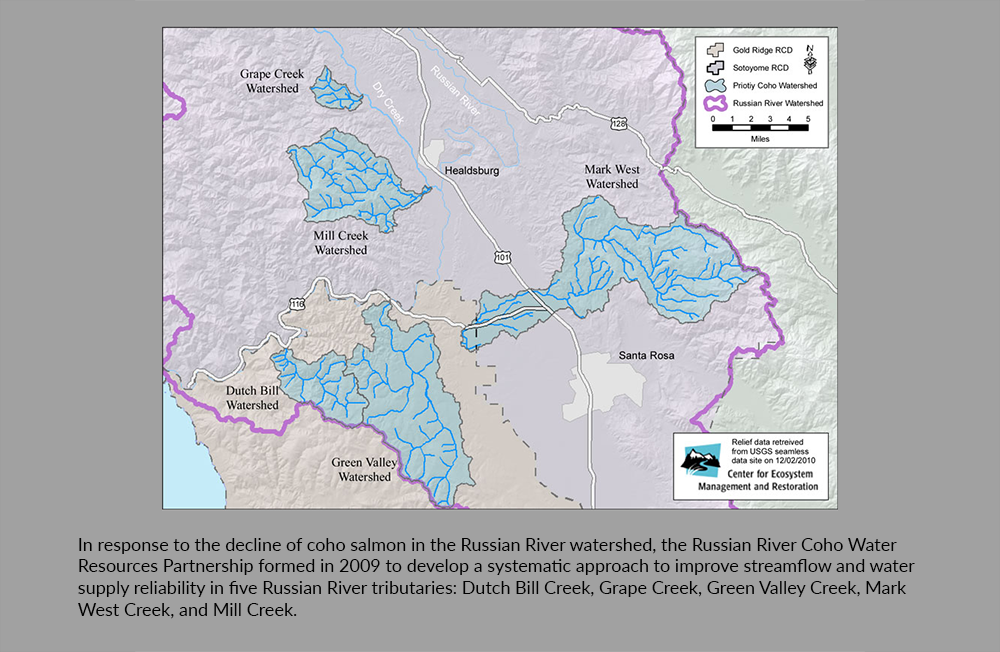This guest post by Mariska Obedzinski of California Sea Grant Extension originally appeared on the Orvis News blog. Orvis is a donor of the Russian River Coho Water Resources Partnership.
The Russian River watershed once supported tens of thousands of coho salmon, attracting anglers from around the world. By the end of the last century, their numbers had dwindled to a mere handful, averaging less than ten returning adults per year. Following the launch of a recovery program in 2001, they are now returning in the hundreds.
The turnaround was the result of an emergency conservation hatchery program that collected a portion of the last remaining wild juveniles and reared them to adulthood. The fish were then genotyped and spawned in a way that maximized genetic diversity for future generations. Each year since 2004, juvenile offspring have been released into historical coho streams within the watershed with the goal of reestablishing self-sustaining runs.
That’s where we come in. For the Russian River Coho Water Resources Partnership, monitoring and restoring conditions for healthy salmon are at the heart of our work. In coastal California’s highly populated, dry environment, this means addressing one of the largest bottlenecks to survival: low summer streamflow.
With assistance from Orvis, our Partnership monitors streams to identify flow-impaired reaches and implements projects that are critical for coho survival. We also research how much surface flow salmon need to survive and thrive. We have found that, in some cases, projects that return even 0.1cubic feet of water per second to a stream can mean the difference between life and death for these endangered juvenile fish.
We share this information with local stakeholders to help identify and prioritize the streams that most need flow enhancement projects. Through a collaboration between Resource Conservation Districts, non-profits, and the University of California, the Partnership assists riparian landowners diverting water from streams in finding alternative ways of getting the water they need through rainwater catchment systems, winter storage, and innovative conservation planning.
Although coho are now returning in the hundreds, there is still a long way to go before the population can make it on its own. With 95 percent of the tributaries flowing through private land, it is quite literally going to take the support of everyone in the Russian River watershed along with the backing of local, state, and federal agencies to restore the population.
Russian River landowners have shown an outpouring of support for coho recovery, cooperating on projects and allowing biologists to access to their land to stock and monitor the recovery of this critical species. They do this knowing that water allocation in California is a difficult challenge, with no easy answers.
Yet above that challenge rises the story that we hear again and again; that the red and silvery flash of migrating salmon is a cornerstone of life along the Russian River, a foundation of favorite family memories, an indispensible source of nutrients for the forest, and once – long ago, and maybe again some day – some really good fishing.

About California Sea Grant
NOAA’s California Sea Grant College Program funds marine research, education and outreach throughout California. Headquartered at Scripps Institution of Oceanography at the University of California San Diego, California Sea Grant is one of 34 Sea Grant programs in the National Oceanic and Atmospheric Administration (NOAA), U.S. Department of Commerce.